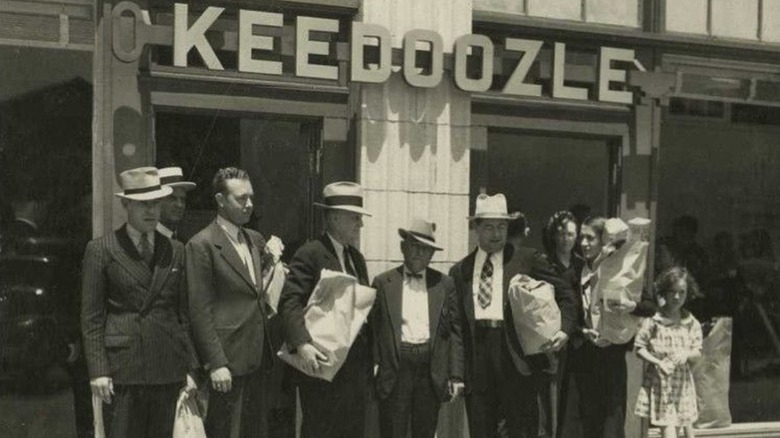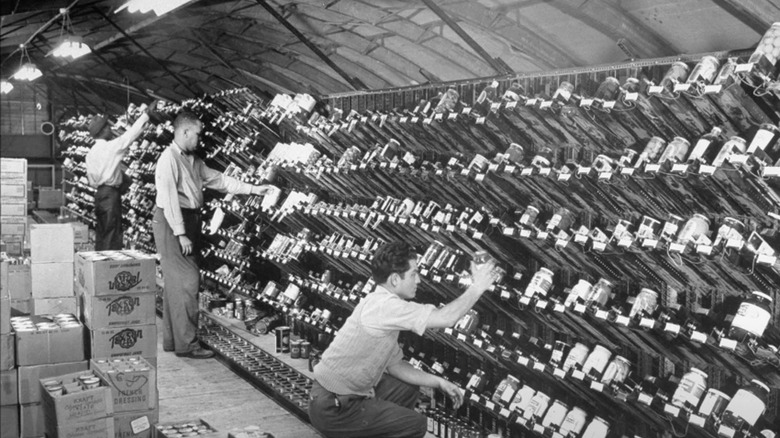The First Automated Grocery Store In The US Opened Earlier Than You Think
You could be forgiven for assuming that the rise of automated grocery stores coincided with the COVID-19 pandemic and subsequent lockdown, just like the explosion in demand for grocery delivery. After all, there are now over 20 Amazon Go stores in the U.S., using the retail giant's Just Walk Out technology, as well as the Black-owned Atlanta startup Nourish + Bloom Market. These semi- to fully-automated grocery outlets have flourished in recent years. But the fact is that the first automated grocery store was conceived way back in 1937 by Clarence Sanders, the same guy who opened the first self-service grocery chain Piggly Wiggly in 1916 (the very model we all use today). Called Keedoozle, it was very much a case of conceptual reach exceeding technological grasp.
The name Keedoozle was Sanders' imaginative portmanteau of the phrase, "key does all." In theory, customers would be given a key when entering the store, which would not only transmit their order of desired products displayed behind glass windows, but also generate an ongoing ticker-tape record of their purchases to be displayed at checkout. The groceries would then trundle down a conveyor belt to be picked up at the end. The customer would leave happy, not only with the gee-whiz modern innovations of blinking lights and electronic convenience, but also at having saved as much as 15% over competing grocery store chains.
The only difference between theory and practice is practice
We say "in theory," not because Keedoozle never worked right, but because it so seldom did. When Time magazine ran a piece on the one-and-only Keedoozle in 1948, it was the third iteration of the Memphis store, after having closed twice because of electronic retooling. Sadly, customers kept receiving the wrong products. In the end, it was Keedoozle's popularity that actually killed it off: The wiring literally couldn't handle all the orders, and the poor guys having to refill the conveyor belt's grocery chutes (prophetic shades of an Amazon fulfillment center) couldn't keep up with demand. Even if they could, the conveyor belts themselves were incapable of transporting all the groceries ordered and too slow to deliver them in a timely manner.
Clarence Sanders was 67 when Time magazine profiled his new store. "It can't miss," he told them. "It's the biggest thing I ever had." All he needed to do was live another 67 years to be able to actually implement his Keedoozle dream.

